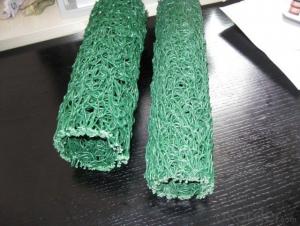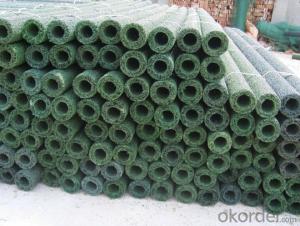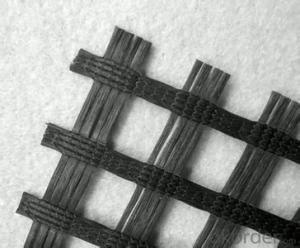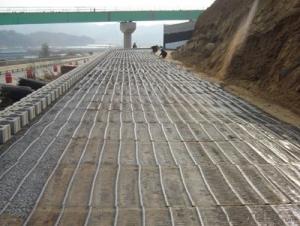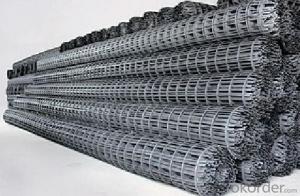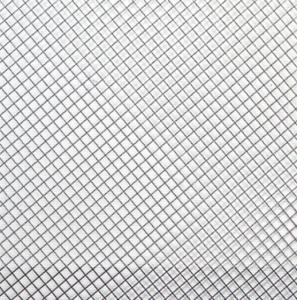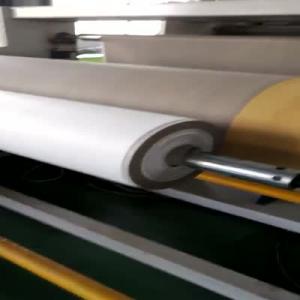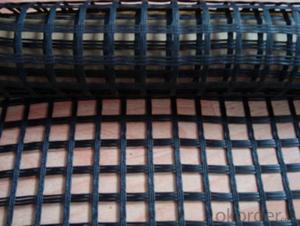Plastic Blind Ditch used in Draiange
- Loading Port:
- Qingdao
- Payment Terms:
- TT OR LC
- Min Order Qty:
- 1000 m
- Supply Capability:
- 150000 m/month
OKorder Service Pledge
OKorder Financial Service
You Might Also Like
Packaging & Delivery
| Packaging Detail: | standard packing or according to client's request |
| Delivery Detail: | 15 days after receiving T/T |
Geocomposite drain pipe technical datas
Item | Square shape | Circular shape | |||||||||
Type | YA7030 | YA1235 | YA1550 | YB60 | YB80 | YB100 | YB150 | YB200 | YB250 | YB300 | |
Outer size(mm) | 70x30 | 120x35 | 120x50 | φ60 | φ80 | φ100 | φ150 | φ200 | φ250 | φ300 | |
Cannular size (mm)≥ | 40x10 | 40x10x2 | 40x20x2 | φ25 | φ45 | φ55 | φ80 | φ120 | φ170 | φ220 | |
Voidage (%)≥ | 70 | ||||||||||
Compress strength (kPa) | Flattening 5% | 70 | 60 | 50 | 85 | 80 | 70 | 50 | 40 | 35 | 30 |
Flattening 10% | 110 | 110 | 70 | 170 | 160 | 140 | 70 | 60 | 55 | 50 | |
Flattening 15% | 150 | 130 | 125 | 220 | 200 | 180 | 100 | 90 | 80 | 70 | |
Flattening 20% | 190 | 180 | 160 | 280 | 250 | 220 | 125 | 120 | 110 | 100 | |
plastic blind ditch
is made of plastic core and outer filtering cloth. In the state of hot melting, it is formed into three-D network structure. It has two shapes: rectangle and round. This kind of pipe has some advantages: good drainage, high pressure resistance, light weight, so it is very popular in some projects.Application:Highway and roadway subgrade,Retaining wall,Landfill,Roof garden,Building foundation,Underground irrigation.
- Q:What kind of experiments need to be done to check geogrid
- Review of the general test or the original detection of the project, but the general requirement to double the number of detection. That is, if there is a sample test is not qualified, then the general review is to extract two samples from the original test material to re check.
- Q:Can geogrids be used in soil stabilization for recreational areas?
- Yes, geogrids can be used in soil stabilization for recreational areas. Geogrids are often used to reinforce and stabilize soil, preventing erosion and improving the load-bearing capacity of the ground. This makes them particularly suitable for recreational areas such as sports fields, playgrounds, or park trails where heavy foot traffic or vehicular loads are expected. By installing geogrids, the stability and durability of the soil can be significantly improved, ensuring a safe and long-lasting recreational space.
- Q:Can geogrids be used in retaining wall drainage systems?
- Yes, geogrids can be used in retaining wall drainage systems. Geogrids are commonly used to provide additional stability and reinforcement to retaining walls. They help to distribute the load and prevent soil erosion behind the wall. Additionally, geogrids can enhance the drainage system by allowing water to flow through them, preventing the buildup of hydrostatic pressure behind the wall. This helps to maintain the structural integrity of the retaining wall and prevent any potential damage.
- Q:Are geogrids suitable for reinforcing steep slopes?
- Yes, geogrids are suitable for reinforcing steep slopes. Geogrids are high-strength, flexible, and durable materials that can provide stability and prevent soil erosion on steep slopes. They enhance the soil's shear strength, distribute loads, and improve slope stability, making them an effective solution for reinforcing steep slopes.
- Q:What is the lifespan of geogrids?
- The lifespan of geogrids can vary depending on several factors such as the type of geogrid, installation conditions, and environmental exposure. However, on average, geogrids are designed and manufactured to have a lifespan of around 50 to 100 years, making them a durable and long-lasting solution for soil stabilization and reinforcement.
- Q:How do geogrids help in reducing the risk of slope instability?
- Geogrids help in reducing the risk of slope instability by providing reinforcement to the soil or rock mass. They are typically made of high-strength polymer materials and are placed within the slope to increase its overall stability. Geogrids improve the shear strength of the soil, distribute the load more evenly, and prevent soil erosion. This reinforcement helps to counteract the forces acting on the slope, reducing the likelihood of slope failure or collapse.
- Q:Is the test items within the inspection listAcceptance specification
- Stagger distance. About these items
- Q:What are the factors that affect the performance of geogrids under cyclic loading?
- The factors that affect the performance of geogrids under cyclic loading include the type and quality of the geogrid material, the design and installation of the geogrid, the magnitude and frequency of the cyclic loading, the soil properties and conditions, and the duration of the cyclic loading.
- Q:What are the long-term maintenance requirements for geogrid-reinforced structures?
- The long-term maintenance requirements for geogrid-reinforced structures are generally minimal. Geogrids are designed to provide long-lasting reinforcement and stability to structures, reducing the need for frequent maintenance. However, periodic inspections should be conducted to ensure the integrity of the geogrid and identify any potential damages or signs of degradation. In some cases, routine cleaning and removal of debris may be necessary to prevent clogging or obstruction of the geogrid. Additionally, if any issues or damages are detected, prompt repair or replacement of the geogrid may be required to maintain the structural integrity and performance of the reinforced structure.
- Q:What are the limitations of geogrids?
- Geogrids have a few limitations that need to be considered. Firstly, they are not suitable for all types of soil. They work best in cohesive soils and may not be as effective in non-cohesive or sandy soils. Secondly, geogrids have limited resistance to chemical degradation, so they may not be appropriate in environments with high chemical exposure. Lastly, geogrids are not designed to withstand heavy loads or provide significant structural support on their own, so they should be used in conjunction with other reinforcement techniques for optimal performance.
1. Manufacturer Overview |
|
|---|---|
| Location | |
| Year Established | |
| Annual Output Value | |
| Main Markets | |
| Company Certifications | |
2. Manufacturer Certificates |
|
|---|---|
| a) Certification Name | |
| Range | |
| Reference | |
| Validity Period | |
3. Manufacturer Capability |
|
|---|---|
| a)Trade Capacity | |
| Nearest Port | |
| Export Percentage | |
| No.of Employees in Trade Department | |
| Language Spoken: | |
| b)Factory Information | |
| Factory Size: | |
| No. of Production Lines | |
| Contract Manufacturing | |
| Product Price Range | |
Send your message to us
Plastic Blind Ditch used in Draiange
- Loading Port:
- Qingdao
- Payment Terms:
- TT OR LC
- Min Order Qty:
- 1000 m
- Supply Capability:
- 150000 m/month
OKorder Service Pledge
OKorder Financial Service
Similar products
New products
Hot products
Hot Searches
Related keywords
